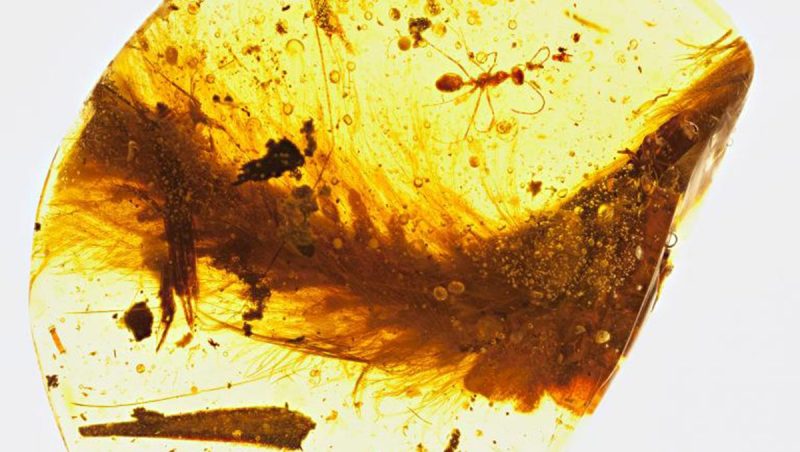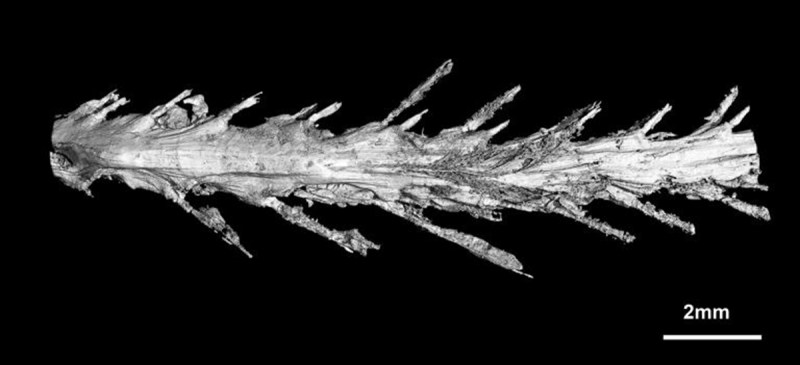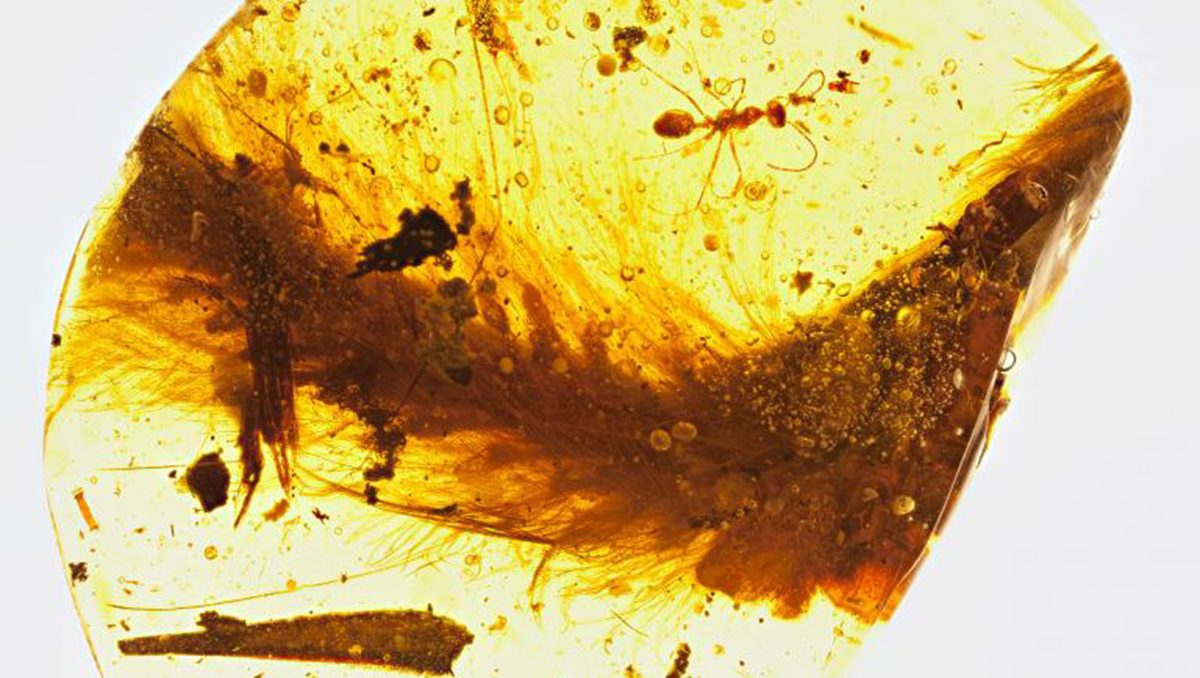
Jurassic Park fans rejoice! A dinosaur tail fragment preserved in amber has been found in northern Myanmar, according to National Geographic.
This remarkable, 99-million-year-old specimen was found by a team of researchers led by China University of Geosciences paleontologist Lida Xing, and their paper on this find was published in the journal Current Biology. Xing’s team dates the tail fragment back to the mid-Cretaceous period, and believes that it belonged to a Coelurosaur, a feathered ancestor the T-Rex.
The fossil itself is slightly less than two inches long and (of course) covered in feathers. Those feathers mark it as an important find, because it represents an early point of differentiation between dinosaur and bird feathers capable of sustaining flight. As it turns out, this dinosaur’s feathers were purely ornamental; they have an open, flexible structure that renders them useless. Flight feathers, on the other hand, have “well-defined central shafts, branches, sub-branches, and hooks that latch the structure together.”

This fossil also lacks the fused tail vertebrae, or pygostyle, that allows tail feathers to move as a single unit, so there’s no way it could have flown.
One of the most interesting facts about this discovery is how it was made. Xing and his research team found this specimen, among others, at an amber market in Myitkyina, Myanmar. Since most Burmese amber is used to make jewelry, the specimen had already been shaped for that purpose when Xing’s team got ahold of it. It’s amazing how often chance plays into scientific discovery, a fact that wasn’t lost on Xing or his colleagues.
With this discovery published, and with tensions waning between Myanmar’s government and the Kachin Independence Army, scientific research may flourish in Myanmar in years to come. In the meantime, click here to read the team’s paper on what they found. Below, watch a video featuring the dinosaur tail trapped in amber.
This article was featured in the InsideHook newsletter. Sign up now.
























